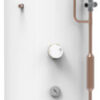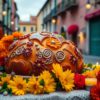Are you tired of spending a fortune on fancy coffee drinks at your local café? Do you crave the ability to make barista-quality coffee in the comfort of your own home? Look no further, as we present to you a comprehensive guide to mastering the art of brewing coffee.
In this article, we will provide you with everything you need to know about making delicious coffee at home. We will cover topics such as understanding different types of coffee beans, choosing the right equipment for home brewing, and mastering basic and advanced brewing techniques. With our guidance, you will be able to create specialty drinks like lattes and cappuccinos complete with beautiful latte art. Plus, we’ll give tips on experimenting with flavor additions and storing and grinding your beans properly. By the end of this guide, you’ll have all the tools necessary to become a skilled barista in your own kitchen – giving you more time and freedom without sacrificing quality caffeine.
Understanding the Different Types of Coffee Beans
You need to know the differences between various coffee beans if you want to brew a delicious cup that suits your taste buds perfectly. Two of the most common types are Arabica and Robusta. Arabica is generally considered higher quality, with a smoother flavor and less bitterness than Robusta. However, Robusta has more caffeine and a stronger taste which can be desirable for some.
Beyond these two main categories, there are many different coffee varieties grown all over the world with unique flavors and characteristics. Different regions produce different types of beans, such as Ethiopian Yirgacheffe or Colombian Supremo. Additionally, roasting levels can greatly impact the final taste of your coffee. Lighter roasts tend to have more acidity and fruity notes while darker roasts have more bitterness and smokiness.
When choosing your beans, consider looking for Fair Trade certifications which ensure ethical sourcing practices for both farmers and workers. Another option is to try out different blends of beans from various regions or varieties until you find one that suits your preferences best.
Understanding the differences between various coffee beans is just one step in mastering the art of brewing barista-quality coffee at home. Once you’ve selected your preferred bean type(s), choosing the right equipment for home brewing is important to maximize flavor extraction and create a consistently great cup every time.
Choosing the Right Equipment for Home Brewing
Picking out the perfect gear for your personal java station can make all the difference in crafting a top-notch morning cup. First, consider investing in a quality grinder. Burr grinders are known to produce consistent grounds that will help create a balanced flavor profile. You can choose between manual and electric options depending on your preference.
Next, don’t underestimate the importance of water filtration. The taste of your coffee is largely influenced by the quality of water used in brewing it. Invest in a filter that will remove any impurities from your tap water and bring out the best in your beans.
Brewing accessories are also essential for home baristas looking to step up their game. Pour over techniques, such as using a Chemex or V60 dripper, offer greater control over extraction and allow you to experiment with different variables like water temperature and pour rate. When choosing a grinder, prioritize one that offers various grind settings so you can adjust according to your preferred brewing method.
As you move towards mastering basic brewing techniques, remember that every aspect of the brewing process matters – from selecting high-quality beans to fine-tuning brew time and ratios. With the right equipment and attention to detail, you’ll be able to craft delicious cups of coffee that rival those at your local café.
Mastering Basic Brewing Techniques
Suppose you want to take your morning cup to the next level. In that case, this section offers valuable tips on perfecting the process with techniques that will enhance your overall brewing experience and increase your enjoyment of every sip. The first thing to consider is water quality. Always use filtered or bottled water for a cleaner taste. Tap water can contain impurities that affect the flavor of your coffee.
Grind size also plays an important role in the brewing process. A finer grind produces a stronger, more intense flavor while a coarser grind creates a milder taste. Extraction time refers to how long the coffee grounds take to release their flavors into the water. Generally, 4-5 minutes is ideal for drip coffee makers and French presses.
The coffee-to-water ratio determines how strong or weak your brew will be. A general rule of thumb is two tablespoons of coffee per six ounces of water, but feel free to adjust according to personal preference. Lastly, brewing temperature affects extraction and flavor; aim for between 195-205°F (90-96°C). Mastering these basic techniques will elevate your home-brewed coffee from average joe to barista-quality goodness!
As you become more confident in these techniques, you may be ready for advanced brewing methods found in the subsequent section about ‘advanced brewing methods for the coffee connoisseur.’ These methods push beyond conventional approaches and are designed for those who desire more complex and nuanced flavors in their cup of joe.
Advanced Brewing Methods for the Coffee Connoisseur
Get ready to take your coffee game to the next level with advanced brewing methods that will transport you to a world of complex and nuanced flavors. If you’re looking for something unique, try siphon brewing. This method uses a vacuum pot that uses vapor pressure to brew the coffee. The result is a smooth, flavorful cup that highlights the unique characteristics of each bean.
Another advanced method is cold brew, which involves steeping coarse coffee grounds in cold water for several hours or overnight. The result is a low-acidic, sweet-tasting coffee that’s perfect for iced drinks or as an alternative to hot coffee during warmer months.
For those who prefer traditional hot brewing methods, pour over and French press are excellent options. Pour over involves slowly pouring hot water over ground coffee filters placed in a cone-shaped dripper. Meanwhile, French press requires steeping coarsely ground beans in hot water before pressing them through a mesh filter with a plunger.
If you’re feeling adventurous, try experimenting with AeroPress variations like inverted or reverse methods. These variations can alter your coffee’s taste and texture by changing the water flow rate through the grounds.
Now that you’ve mastered these advanced brewing techniques, it’s time to move on to perfecting milk steaming and latte art. With practice and patience, you’ll be able to create beautiful designs atop your perfectly-brewed cups of coffee!
Perfecting Milk Steaming and Latte Art
So, you wanna impress your friends with some fancy latte art? Well, buckle up buttercup because we’re diving into the world of milk steaming and foam frothing. To achieve that perfect silky texture, start by choosing the right type of milk. Whole milk is preferred for its higher fat content which creates a richer texture, but if you’re lactose intolerant or vegan, there are plenty of milk substitutes such as almond or oat milk that can still create great foam.
Once you’ve chosen your milk, it’s time to start steaming. Begin by purging any excess water from the steam wand and submerging it in your cold milk pitcher. Turn on the steam wand and gradually move it towards the surface while keeping the tip just below the surface. This will create a vortex which helps to incorporate air into the milk. When you reach your desired temperature (around 140°F), turn off the steam wand and tap your pitcher to remove any large bubbles.
Now that you have mastered texturing your milk, let’s talk about latte design inspiration! There are endless possibilities when it comes to creating latte art – from simple hearts and tulips to intricate rosettas and swans. Check out online resources for inspiration or even attend latte art competitions where baristas showcase their skills in front of judges and an audience. Don’t be afraid to experiment with alternative materials such as cocoa powder or caramel sauce for unique designs.
As you continue on your journey towards becoming a coffee connoisseur, remember that experimenting with flavor and syrup additions can take your homemade coffee creations to another level. Try adding different flavored syrups like vanilla or hazelnut to enhance sweetness or add spices like cinnamon or nutmeg for added depth of flavor. The options are endless so keep exploring until you find what works best for you!
Experimenting with Flavor and Syrup Additions
Now that you’ve perfected your milk steaming and latte art skills, it’s time to take your coffee game to the next level. Experimenting with flavor and syrup additions is a great way to add depth and complexity to your coffee creations.
Firstly, consider flavor pairing. Just like in cooking, certain flavors complement each other while others clash. For example, vanilla pairs well with chocolate or caramel while citrus can enhance fruity notes in coffee. Experimenting allows you to discover which flavors work best for your tastes.
Next, try making homemade syrups using simple ingredients like sugar, water, fruit juices, extracts, and spices. This allows for more control over your drinks’ sweetness levels and flavor profiles. Infusion techniques such as steeping herbs or spices in hot syrup can also add interesting flavors.
For those looking for even more creativity, try making coffee cocktails by adding spirits like whiskey or rum to your coffee creations. Sweet and savory combinations such as bacon-infused syrups or salted caramel are also gaining popularity.
Remember that taste is subjective so don’t be afraid to experiment until you find what works best for you. Flavor additions can elevate even the simplest cup of coffee into a luxurious treat.
As you continue on your journey towards becoming a home barista extraordinaire, it’s important not to neglect the basics such as proper storage and grinding of beans. Keep reading for tips on preserving your beans’ freshness long after they leave the roaster.
Tips for Storing and Grinding Coffee Beans
Properly preserving the flavor of your coffee beans through storage and grinding techniques is crucial to achieving a truly exceptional cup of joe. First and foremost, storing your beans in an airtight container away from light, heat, and moisture is important. Exposure to these elements can cause the beans to lose their freshness quickly. Instead, opt for a ceramic or glass container with a tight-fitting lid.
When selecting beans, always look for freshly roasted ones that have been roasted within the past two weeks. Once you’ve found the perfect batch, it’s time to grind them up. Consistency is key when grinding coffee beans as this will affect the extraction process. Burr grinders are recommended over blade grinders because they produce consistent grounds and minimize heat buildup during grinding which can alter the flavor of your coffee.
By following proper storage and grinding techniques, you’ll be able to retain freshness and achieve optimal grind consistency every time. This will result in a consistently great-tasting cup of coffee that showcases the unique flavors of each bean variety. In the next section, we’ll delve into troubleshooting common brewing problems so you can continue on your journey towards mastering barista-quality coffee at home!
Troubleshooting Common Brewing Problems
If you’re tired of experiencing frustrating brewing mishaps, this section offers practical solutions to common problems. Over-extraction is a problem that occurs when coffee grounds are in contact with hot water for too long. Try using less coffee or adjusting your brewing time to fix this issue. On the other hand, under-extraction happens when coffee grounds don’t come into enough contact with hot water. Increase the amount of coffee used or extend the brewing time to solve this problem.
Temperature control is crucial for brewing quality coffee at home. If the water temperature is too low, it can result in under-extracted and weak-tasting coffee. Conversely, if it’s too high, it can lead to over-extraction and bitter-tasting brews. A good rule of thumb is to aim for a temperature between 195°F and 205°F while brewing.
Water quality also plays an essential role in making great tasting coffee. If you find that your brews have an off-flavor or odor, consider switching up your water source or investing in a filtration system for your tap water. Lastly, ensure that your grinder is well-maintained by cleaning it regularly and checking whether the settings are appropriate for your desired grind.
By following these tips on over-extraction solutions, under-extraction fixes, temperature control tips, water quality adjustments and grinder maintenance advice, you’ll be able to master the art of making barista-quality coffee at home without any frustration!
Frequently Asked Questions
How do I properly clean my coffee equipment?
Cleaning your coffee equipment is essential for producing the best-tasting coffee at home. You can use several cleaning methods, such as soap and water, vinegar, or specialized cleaning products. Common mistakes include not cleaning often enough or using abrasive materials that can damage your equipment. To ensure proper sanitation, always clean your equipment after each use and take extra care to clean any hard-to-reach areas. It’s also important to follow a maintenance schedule and regularly descale your equipment to prevent buildup. Recommended cleaning products include Urnex Full Circle Coffee Equipment Cleaning Powder or Cafiza Espresso Machine Cleaner. By properly cleaning and maintaining your coffee equipment, you’ll enjoy better-tasting coffee and extend the life of your gear while achieving the freedom of having barista-quality coffee at home.
How long should I allow my coffee to steep?
Are you tired of drinking weak and flavorless coffee? Well, it’s time to take your brewing game up a notch. The secret to a perfect cup lies in the brewing time. Sure, you can steep your coffee for a few seconds and get a quick caffeine fix, but if you want to savor the rich flavors and aromas of your favorite roast profile, you need to give it some time. The extraction rate is directly proportional to the brewing time. So, if you want a stronger cup, let it steep longer. But that’s not all; the grind size also plays a crucial role in determining the flavor profile of your coffee. A finer grind will lead to over-extraction, while a coarser one will under-extract the grounds. Hence, it’s essential to experiment with different variables until you find that sweet spot that satisfies your taste buds. Remember: patience is key when it comes to brewing coffee at home!
What is the best water temperature for brewing coffee?
To brew the perfect cup of coffee, you must pay attention to the water temperature. The ideal water temperature for brewing coffee is between 195-205°F (90-96°C). The temperature can affect the flavor profile and extraction method of your coffee. If your water is too hot, it can extract too much bitterness from the beans, resulting in a harsh taste. On the other hand, if your water is too cold, it won’t extract enough flavor from the beans, resulting in a weak cup of coffee. Different brewing techniques and coffee bean origins may also require slightly different temperatures. Always start with fresh filtered water and adjust accordingly to achieve optimal results. By paying attention to detail regarding water temperature and experimenting with various brewing methods, you can master the art of brewing barista-quality coffee at home that satisfies your subconscious desire for freedom!
Can I use pre-ground coffee instead of grinding my own beans?
Using pre-ground coffee instead of grinding your own beans has its pros and cons. On the one hand, it’s convenient and saves time. You don’t need to invest in a grinder or spend extra time preparing your coffee before brewing. However, pre-ground coffee often lacks the freshness and flavor profile you get from freshly ground beans. Ground coffee also has a shorter shelf life than whole beans, which can affect the taste of your brew over time. Another factor to consider is the grind size, as different brewing techniques require different grind sizes for optimal extraction. While using pre-ground coffee may be more accessible, it’s worth exploring fresh bean options to elevate your at-home barista experience.
How can I determine the quality of the coffee beans I am purchasing?
When it comes to purchasing coffee beans, there are several factors you should consider in order to determine the quality of the product. First and foremost, pay attention to the roast level. Dark roasts tend to have a stronger flavor profile while lighter roasts are more acidic and fruity. Additionally, look for origin information on the packaging as this can give you insight into the flavor notes of the coffee. Packaging type can also indicate freshness – opt for bags with one-way valves that allow carbon dioxide to escape without letting oxygen in. Finally, take note of the aroma profile when opening the bag – if it smells stale or musty, it’s likely not fresh. By paying attention to these indicators, you can select high-quality beans that will make for delicious coffee at home.
Conclusion
Congratulations, you’re now well on your way to becoming a master brewer! With the knowledge and skills you’ve acquired from this guide, you’ll be able to make barista-quality coffee right in the comfort of your own home.
According to a study by the National Coffee Association, 64% of Americans drink at least one cup of coffee daily. That’s a lot of coffee lovers out there who are always looking for ways to up their brewing game. And with the tips and techniques outlined in this guide, you can be sure that your morning cup will be as delicious as any professional brew.
Remember, mastering the art of brewing takes practice and patience. Don’t be discouraged if it doesn’t come out perfect on your first try. Keep experimenting with different beans, equipment, and techniques until you find what works best for you. So go ahead, grab some beans and get brewing!
This Article is Brought to You By https://www.pysznakawa.pl/
The Article Mastering the Art of Brewing:How to Make Delicious Coffee at Home First Appeared ON
: https://ad4sc.com











Comments are closed